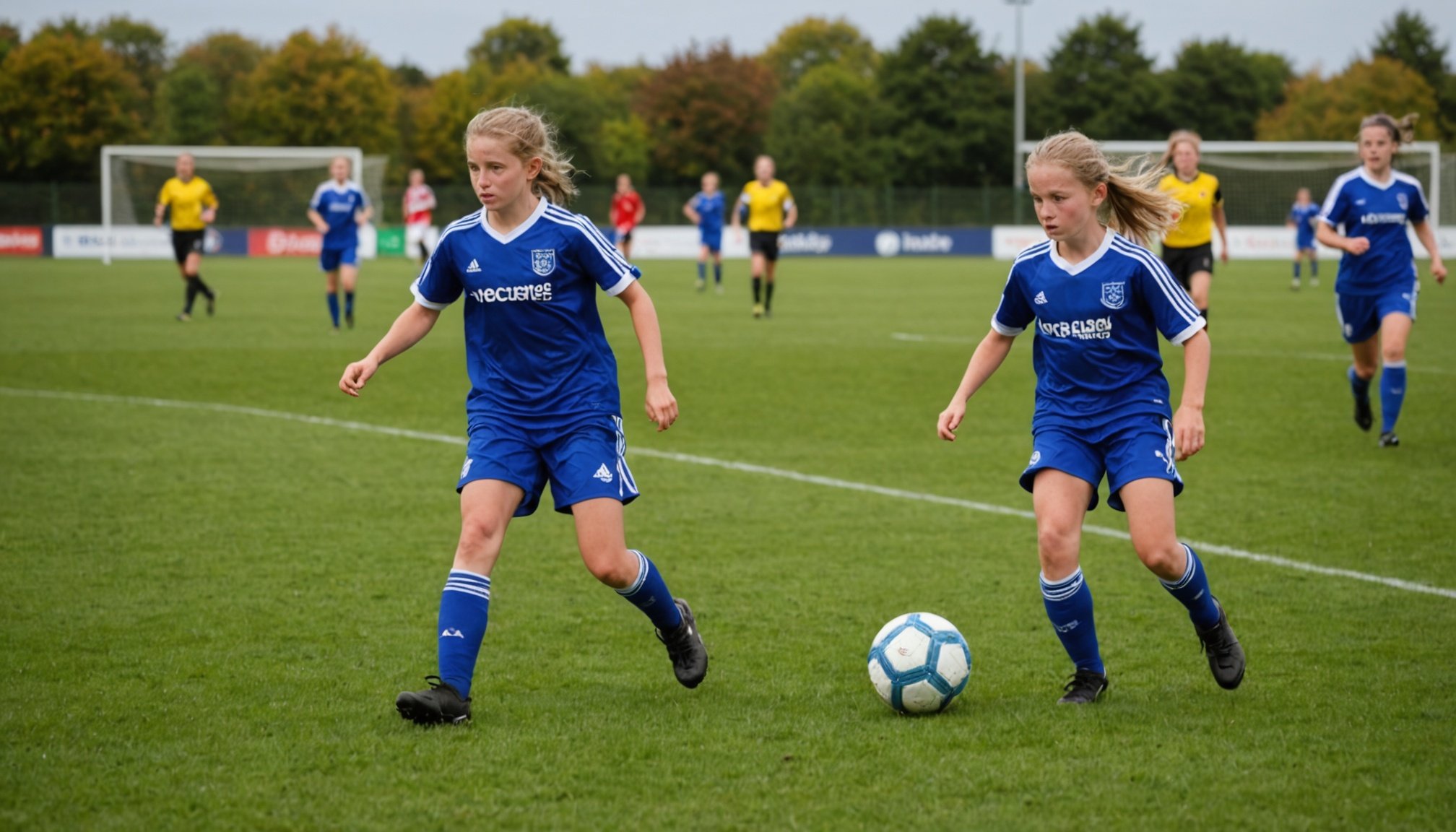In recent years, the landscape of football in the UK has undergone significant transformation, particularly in terms of inclusivity and participation. While the men’s game continues to draw considerable attention and support, the women’s game is experiencing a renaissance, marked by increasing visibility and interest. However, grassroots football clubs must do more to attract female players, which is essential for the sport’s growth and sustainability. This article explores practical strategies that grassroots clubs can implement to enhance female participation, creating a more welcoming environment that nurtures talent and passion for the game.
Understanding the Barriers to Female Participation
To effectively attract more female players, grassroots clubs must first understand the barriers that have traditionally hindered their participation in football. Many girls and women cite various factors that discourage them from playing, including social stigma, lack of role models, and limited access to facilities. It is essential to address these challenges head-on to create a more welcoming atmosphere.
Have you seen this : How has the COVID-19 pandemic reshaped the landscape of UK football?
Social stigma remains a significant barrier for many young girls. Football has historically been viewed as a male-dominated sport, and some families may not support their daughters’ involvement. This cultural perception can lead to girls feeling unwelcome or out of place on the pitch. Furthermore, a lack of visibility for female football role models can exacerbate this issue. Without prominent figures to look up to, young girls may feel they do not belong in the sport.
Additionally, access to facilities poses another challenge. Many grassroots clubs may not have the resources or appropriate venues to accommodate female players, leading to a lack of training opportunities. Furthermore, scheduling conflicts with other sports or activities often make it difficult for girls to commit to football, particularly when they are younger and their time is divided among multiple interests.
Also to see : What are the advantages and disadvantages of artificial pitches in UK football?
By acknowledging these barriers, grassroots clubs can begin to take strategic steps in addressing them. This may involve engaging with local communities to change perceptions of female participation and ensuring that facilities are inclusive and accessible. Clubs can also focus on developing programs that cater specifically to girls, fostering an environment where they can thrive and enjoy the sport.
Creating a Welcoming Environment
Establishing a welcoming environment is one of the most crucial steps grassroots clubs can take to attract more female players. This involves not only promoting inclusivity but also ensuring that every young girl who walks through the gates feels they are part of a community that values their participation.
First, clubs should emphasize the importance of having female coaches and staff. Female role models can create a more relatable and supportive environment for young players. By providing women in leadership positions, clubs can demonstrate a commitment to gender equality, inspiring young girls to pursue the sport without feeling intimidated.
Moreover, creating female-only training sessions or teams can foster a sense of belonging. These sessions help young girls develop confidence and skills without the pressure often associated with mixed-gender environments. Clubs can enhance these training sessions by organizing friendly matches and tournaments, which can further encourage participation and build camaraderie among players.
Communication is another key element in fostering an inclusive atmosphere. Grassroots clubs should actively promote their initiatives through social media, local schools, and community centers, clarifying that they welcome female players of all ages and skill levels. Outreach programs that engage parents and communities can also help dismantle existing stereotypes and promote the benefits of football for girls.
Finally, clubs should consider hosting open days or taster sessions, where girls can try out football in a low-pressure setting. By removing the barriers to entry, clubs can encourage girls to see football as a viable sport for them, ultimately leading to increased participation.
Building Community Partnerships
Building strong partnerships within the community is another vital strategy that grassroots football clubs can employ to attract female players. Collaborative efforts can enhance visibility and create more opportunities for engagement, making football more accessible to girls.
Clubs can partner with local schools, colleges, and universities to promote women’s football. By establishing programs that encourage participation among female students, clubs can tap into an existing audience that may be interested in taking up the sport. Schools can facilitate after-school programs and workshops that introduce girls to the fundamentals of football, creating a pipeline for future club members.
Additionally, grassroots clubs can collaborate with local organizations that focus on empowering women and girls. These partnerships can yield resources and support to promote events specifically aimed at increasing female participation in football. Workshops, mentoring programs, and training camps can be organized, encouraging girls to develop their skills in a supportive environment.
Furthermore, local businesses can play a role in enhancing community engagement. Sponsorships or partnerships with businesses can lead to increased funding for female programs, allowing clubs to invest in better facilities, training equipment, and coaching. Marketing campaigns that highlight female participation in football can also raise awareness and interest within the community.
Moreover, clubs should strive to celebrate achievements in women’s football, whether through social media shoutouts, awards, or events. By showcasing success stories and promoting female players, clubs can build a vibrant community that encourages young girls to pursue their passion for the sport.
Developing Targeted Programs and Initiatives
To attract more female players effectively, grassroots football clubs must develop targeted programs and initiatives tailored to the specific needs and interests of girls. These programs should focus on skill development, competitive opportunities, and fostering a love for the game.
One effective approach is to establish training camps or workshops specifically designed for girls. These sessions should focus on skill development, providing a safe space for players to learn and improve without the fear of judgment. Clubs can invite experienced female coaches to lead these sessions, ensuring that participants receive quality instruction that resonates with their experiences.
In addition to training, clubs should consider organizing girl-only leagues or tournaments. Creating a competitive yet friendly atmosphere will not only encourage girls to participate but also help them build lasting friendships within the sport. These events can also serve as a platform for showcasing talent, allowing scouts and coaches to identify potential future stars.
Furthermore, clubs can implement mentorship programs, pairing young female players with experienced female athletes. This initiative allows younger players to learn from those who have navigated similar challenges, providing guidance and motivation to pursue their football journey. Mentorship can significantly impact young girls, giving them confidence and support in their sporting endeavors.
Crucially, clubs should also prioritize feedback from participants. Engaging female players in discussions about their experiences and suggestions for improvement can provide valuable insights that help tailor programs more effectively. By actively listening to their needs, clubs can cultivate an environment that champions female participation, ensuring that girls feel valued and heard.
In conclusion, attracting more female players to grassroots football clubs in the UK is not only a matter of increasing numbers but also about fostering a culture of inclusivity and accessibility. By understanding the barriers that hinder participation, creating welcoming environments, building community partnerships, and developing targeted programs, clubs can effectively engage female players and nurture their passion for the sport. The growth of women’s football on a grassroots level will play a crucial role in the future of the game, contributing to a more diverse and dynamic football community. As clubs take proactive steps to promote female participation, they help to pave the way for a brighter and more inclusive future for football in the UK.











